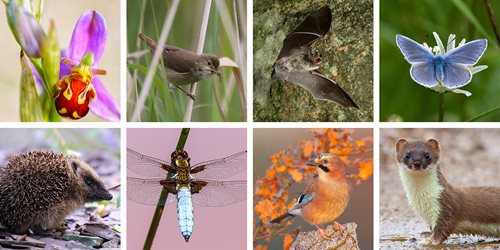
Starting this week on Twitter and LinkedIn, each day for the next 50 days the MPA will highlight one mammal, bird, amphibian, reptile, invertebrate or plant which has flourished thanks to the restoration and ongoing management of former quarries.
The MPA says that the UK quarrying industry has long recognised the opportunity to enhance biodiversity through careful quarry restoration, with the first formal restoration plans devised and implemented in the 1950s. In 1971 the Sand and Gravel Association (SAGA), one of the predecessor organisations that merged with others to eventually form the MPA, hosted the first awards to celebrate the restoration of quarries.
However, according to the MPA, to this day the unique and significant role that quarry restoration plays in long-term nature recovery and conservation remains one of the industry’s best kept secrets although recognition has been growing in recent years as biodiversity concerns increase.
“Maybe that’s because by the time a well-restored quarry scheme has come to fruition, most people have forgotten that the site once provided the essential materials for the places where they live, work and play,” said Mark Russell, MPA executive director.
“In fact, the chances are that your local nature reserve is the result of mineral extraction, as are many of the UK’s flagship conservation parks. For example, in England alone there are over 2,000 quarries, covering 64,000 hectares (0.1% of the country's land area) all of which will be restored after quarrying."
Russell adds that, in total, MPA members have already created over 83 sq km of priority habitat with a further 110 sq km pledged in approved restoration plans - an area equivalent to Liverpool and Nottingham combined.
Today more than 80 restored quarries make up the MPA’s ‘virtual’ National Nature Park which also features visistor centres, nature trails and educational facilities. Restoration work has also spawned long-standing partnerships with numerous well-known conservation organisations, many of whom take over the running of restored sites as nature reserves open to the public.
The MPA says this unique ability to create areas for nature to thrive has taken on a whole new perspective since the introduction of the Government’s new Environment Bill which – amongst other things – will oblige all new developments in England to deliver an overall increase – a ‘net gain’ – in biodiversity.
Russell said of the 50th awards event scheduled for October: “It’s essential for the sector to recognise the exceptional achievements to date and celebrate the quarry managers, planning managers, restoration managers and their teams who continue to deliver a longstanding legacy.”













